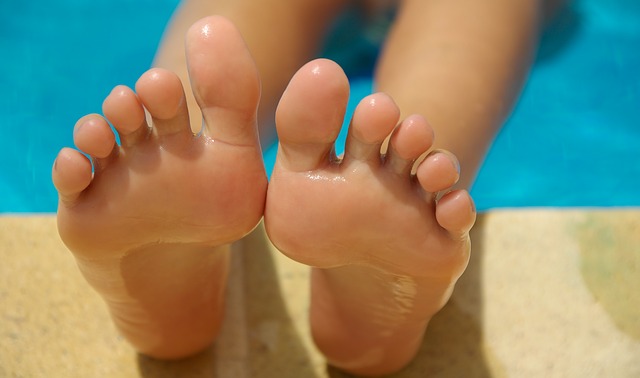This post may contain affiliate links. Please read the disclaimer for more information.
About a week ago now, I went to a podiatrist who diagnosed me with a condition called hallux limitus.
The hallux, meaning the big toe, gets limited with this condition and becomes unable to dorsiflex (bend back) to an appropriate extent.
What this stems from is the narrow toe boxes from our shoes pushing our toes together, mainly the big toe getting pushed in. The sesamoids, the two small bones under the big toe which I have discussed before, get displaced and pulled in just like the big toe was. This impairs the mobility of the big toe and sets off a chain reaction of events which I won’t go into right now but it results in you being in pain which is most likely why you’re reading this.
I walked in and described to the podiatrist that what caused my injury was basically a hyperextension of my big right toe during a soccer game. He was able to look at the x-ray from the initial doctor’s visit and listen to the symptoms that I described to him and without hesitation, he knew what I was dealing with.
Hallux limitus is a condition that I have heard of before but being that my symptoms seemed like they so clearly fit in the realm of sesamoiditis and turf toe, I assumed that was what I was dealing with.
From the research I have done, it seems that turf toe, sesamoiditis, and hallux limitus all have quite a bit in common and either can lead to each other’s development, accelerate the symptoms that you feel, or just play off each other in a way that can be hard to diagnose any singular condition.
While this visit was mostly unsuccessful in my opinion as it was too short and I still had many questions to ask the doctor, I was glad that I at least came away with a new search term to look into. As expected, anti-inflammatories, shoe orthotics, and toughing it out we’re all prescribed to me from this visit which didn’t give me a whole lot more direction.
He did tell me that the manual mobilizations I had been doing with my foot and toe were beneficial so I should keep that up. Let’s talk about those mobilizations and some of the other treatment options that I have come across in my newfound research.
Toes Spacers
Toe spacers are going to help you because they will begin realigning the toes into their proper positions. Again, this is mainly for the sake of the big toe as this is the toe that has the small sesamoid bones under it which are causing the problem.
Getting toe spacers on your feet regularly will move the big toe back into it’s natural position with the sesamoid bones following along. This is a very easy and affordable thing to start doing daily.
Toe Extensor Stretch
I have referred to this stretch before and I will again because it is a great remedy to use against the ills that modern footwear often brings us.
The stretch is very simple and safe. Simply curl your toes under your feet and apply pressure into the ground. Check out this article about the stretch for more details.
This stretch will help re-lengthen the extensor hallucis longus, a muscle sitting on top of the foot that is tight from modern footwear and is now under too much pressure.
Manual Toe Mobilizations
Other toe mobilizations I have found include using your hands and manually working your toe in the directions you want to improve it’s mobility.
One thing I will often do is use one hand to manually realign the big toe and also to hold and isolate the first metatarsal joint from the others. While holding this position, use the other hand to pull the affected big toe straight outward. This is another stretch/exercise that can be done daily.
According to Dr. Ray McClanahan,
“That applied frequently will help loosen up the capsule, loosen up the joint, loosen up the adductor, and enable that person to approximate a better big toe position.”
Minimalist Footwear
Minimalist footwear is going to be a change for the better in the case of hallux limitus because compared to traditional footwear, minimalist options always have a wider toe box. This will allow the toes to spread out more inside the shoe, especially important for the big toe as we talked about.
This kind of footwear is also going to be better because there will be either be no toe spring or less of it than a traditional option would have. Toe spring is the lift at the end of the shoe that pulls your toes up above where they would naturally sit.
This is important because the toe spring teaches your toes to remain in that unnatural position and it impairs the mobility of your toes. Eliminating this feature is in our best interest.
I recommend that anyone starting out in minimalist footwear tries Xero Shoes as they are an excellent introduction to the world of minimalist options.


Leave a Reply